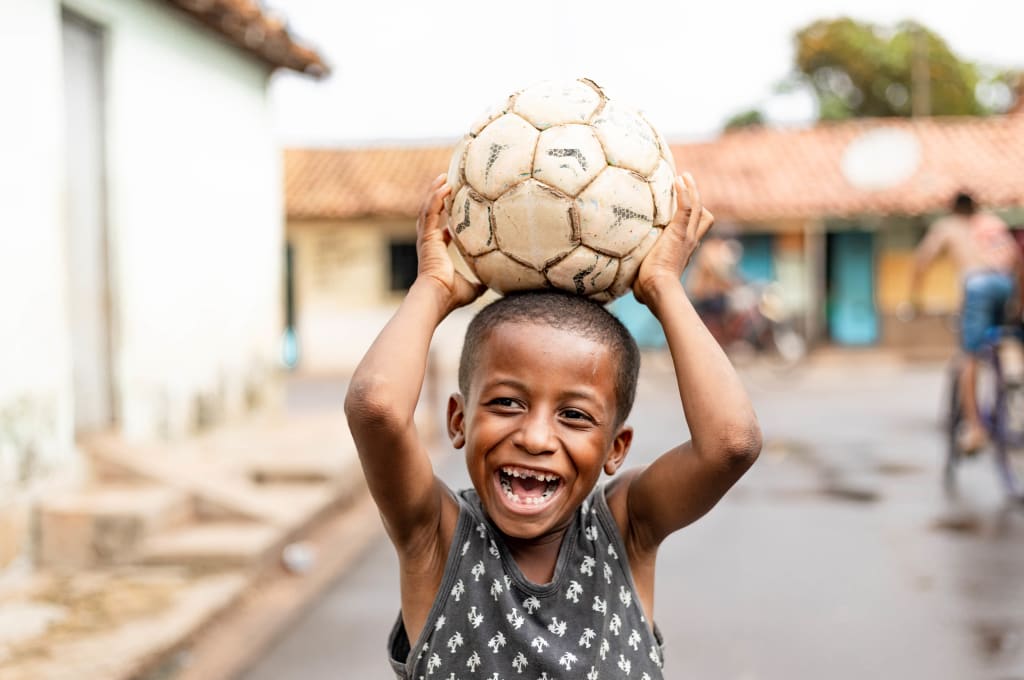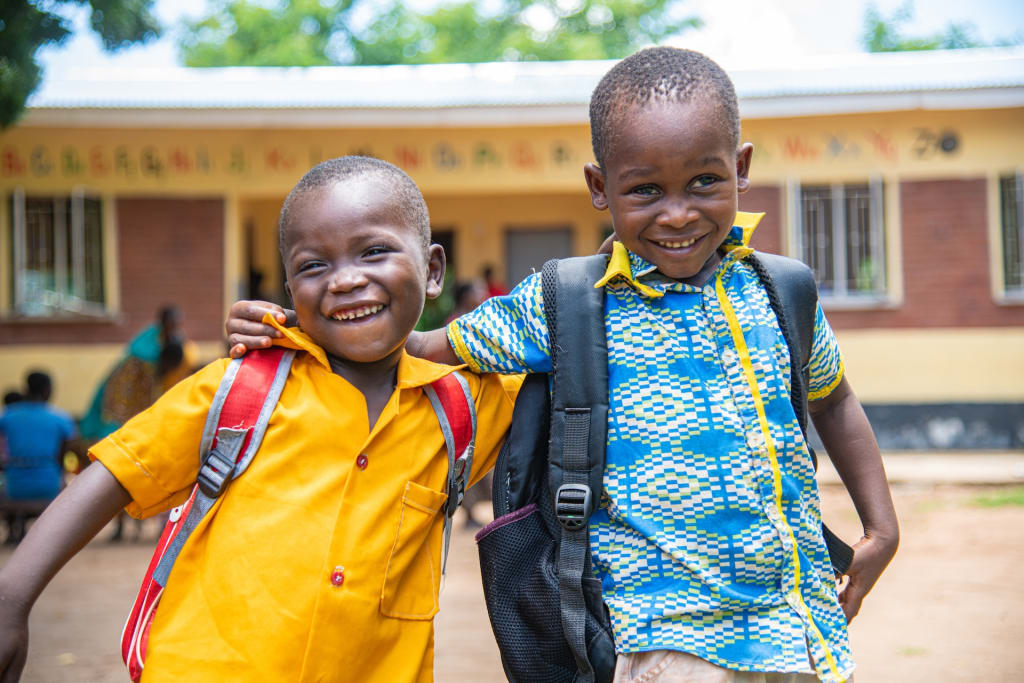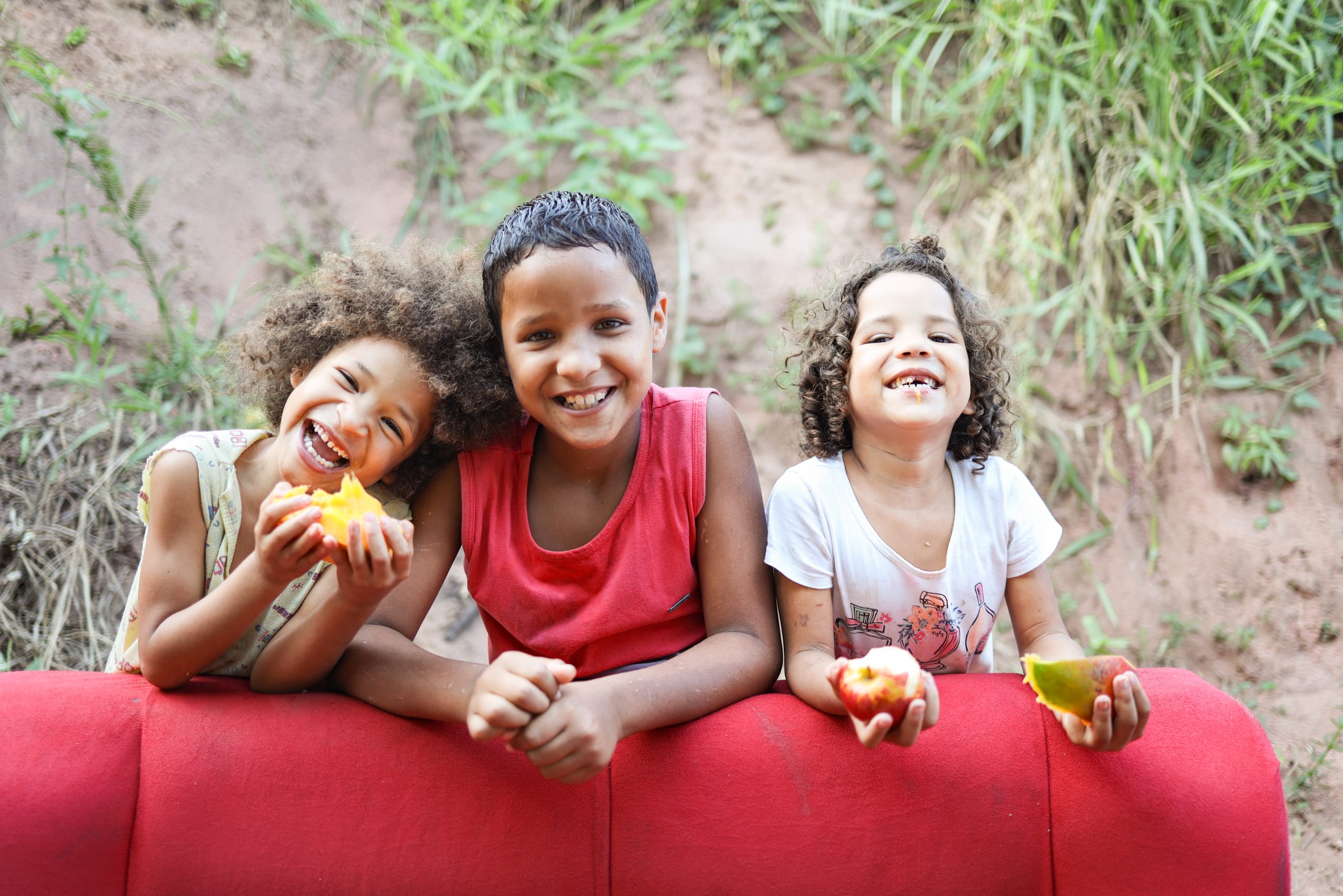In 2024, progress is urgently needed to address the many sobering global poverty statistics we see and hear.
With information flying at us at record speeds, we don’t often let it all sink in. But numbers and statistics can speak volumes. The needs they represent are embodied in real lives and experiences.
Behind every statistic and figure, there are faces and stories. This collection of global poverty statistics invites you to step into the realities represented in the numbers and facts you might read or hear on Compassion’s blog, social media feeds or other channels.
Psst… do big numbers make you feel overwhelmed? Then start here.
Global poverty statistics

- Extreme poverty is defined as living on less than $2.15 a day. (World Bank)
- About 670 million people, or 8.4 per cent of the world’s population, live in extreme poverty today. (United Nations)
- Almost half of the world’s population lives on less than $6.85 a day—the measure of poverty used for upper-middle-income countries. (World Bank)
- After decades of steady progress, extreme poverty increased for the first time in a generation during the COVID-19 pandemic. (United Nations)
- Approximately 575 million people, or nearly 7 per cent of the world’s population, will still be living in extreme poverty in 2030, if current trends continue. (United Nations)
- An estimated 100 million people worldwide are unhoused and one in four people live in conditions that are harmful to their health, safety and prosperity. (UN-Habitat)
Children in poverty

- An estimated 333 million children live in extreme poverty today. (United Nations)
- One billion children worldwide are experiencing multidimensional poverty, which means they lack basic necessities like nutritious food or safe water and sanitation. (UNICEF)
- Children are more than twice as likely to live in poverty than adults. (World Bank)
- Approximately 5 million children under the age of 5 die each year, mostly from preventable and treatable causes. Approximately half of those deaths (2.4 million) occur in the first 28 days of life. (WHO; United Nations)
- Approximately 1.2 million children may be trafficked each year. An estimated 1 in 5 trafficking victims are children. (UNICEF; UNODC)
Hunger and malnutrition

- Around 148 million children, or about one in five worldwide, are chronically malnourished. (UNICEF)
- About 735 million people faced hunger in 2022. (FAO)
- 2.4 billion people worldwide are experiencing moderate or severe food insecurity. (FAO)
- 258 million people in 58 “hunger hotspot” countries experienced crisis-level acute food insecurity in 2022. This includes 15 countries where Compassion works. (Food Security Information Network)
- Nearly half of all deaths in children under 5 are attributable to undernutrition. Undernutrition puts children at greater risk of dying from common infections, increases the frequency and severity of such infections and delays recovery. (UNICEF)
Education

- 250 million children are not in school. (UNESCO)
- Globally, approximately one in five youth are not in education, employment or training. (ILO)
- Without additional measures, 84 million children and youth will still be out of school by 2030 and 300 million students will still lack basic numeracy and literacy skills. (United Nations)
- In 2020, approximately a quarter of primary schools globally did not have access to basic services such as electricity, drinking water and basic sanitation facilities. (United Nations)
Water and sanitation

- 2.2 billion people worldwide lack safely managed drinking water services. (United Nations)
- 3.4 billion people worldwide lack safely managed sanitation services. (United Nations)
- 1.9 billion people worldwide lack basic hygiene services. (United Nations)
- Approximately 505,000 diarrhoeal deaths are caused by contaminated drinking water each year. (WHO)
Women and girls

- Worldwide, 129 million girls are out of school. (UNICEF)
- Every year, at least 12 million girls are married before they reach the age of 18. One in five girls is married before reaching age 18. (OHCHR)
- An estimated one in 10 girls in Sub-Saharan Africa miss school during their menstrual cycle. (UNESCO)
- Just one more year of school can increase a girl’s earnings when she is an adult by up to 20 per cent. (UNESCO)
- Globally, women earn 24 per cent less than men. Around the world, women are in the lowest-paid work, often in the informal economy, making them more vulnerable to poverty and exploitation. (Oxfam)
Global poverty statistics can be overwhelming.
But there’s good news: you can help to change a child’s story.
[Last update: February 7, 2024]





